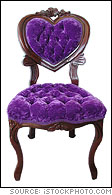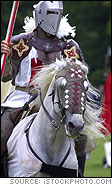Entri Terkini
Ahlan Wa Sah Lan Wa Marhaban Bikum
Anda Pengunjung ke...
Polaris De Cafe
Rakan Blogger Polaris...Terima Kasih Semua...
Salam Aidil Fitri 2011- Mohon maaf Atas Segala Kesilapan dan Terkasar Bahasa
Tuesday, February 22, 2011
Karnival Pembestarian Sekolah 2008 (Perasmian).
Read more...
Sunday, February 20, 2011
Fun Food Facts
2. The onion is named after a Latin word meaning large pearl
3. Half of the world's population live on a staple diet of rice
4. "Fast Food" Isn't New!
5. Potato crisps were invented by a North American Indian called George Crum
6. During a lifetime the average person eats about 35 tonnes of food
7. Ice Cream Is Chinese Food!
China in 1295, he brought back a recipe (among other things). The recipe, was a
Chinese recipe for a desert called "Milk Ice." However, Europeans substituted
cream for the milk, and voila..."Ice Cream." Ice cream has been a hit ever since!
Vitamin A is known to prevent "night blindness," and carrots are loaded with
Vitamin A. So, why not load-up today!
9. The Word "Salary" Comes From "Salt!"
and packaged food contains so much that it's far too easy to eat too much salt (salt
is also known as "sodium").
10. Sometimes Frozen Fruits And Vegetables Are More Nutritious Than Fresh!
Read more...
Thursday, February 17, 2011
Interesting Facts Abouts Colors
What Colors Mean
We live in a colorful world. In many countries, colors represent various holidays; they are also used to express feelings and enliven language. Find your favorite color and see what it means around the world.
Red
 |
For the ancient Romans, a red flag was a signal for battle.
Because of its visibility, stop signs, stoplights, brake lights, and fire equipment are all painted red.
The ancient Egyptians considered themselves a red race and painted their bodies with red dye for emphasis.
In Russia, red means beautiful. The Bolsheviks used a red flag as their symbol when they overthrew the tsar in 1917. That is how red became the color of communism.
In India, red is the symbol for a soldier.
In South Africa, red is the color of mourning.
It's considered good luck to tie a red bow on a new car.
In China, red is the color of good luck and is used as a holiday and wedding color. Chinese babies are given their names at a red-egg ceremony.
Superstitious people think red frightens the devil.
A “red-letter day” is one of special importance and good fortune.
In Greece, eggs are dyed red for good luck at Easter time.
To “paint the town red” is to celebrate.
Red is the color most commonly found in national flags.
In the English War of the Roses, red was the color of the House of Lancaster, which defeated the House of York, symbolized by the color white.
The “Redshirts” were the soldiers of the Italian leader Garibaldi, who unified modern Italy in the nineteenth century.
To “see red” is to be angry.
A “red herring” is a distraction, something that takes attention away from the real issue.
A “red eye” is an overnight airplane flight.
If a business is “in the red,” it is losing money.
Green
 |
Only one national flag is a solid color: the green flag of Libya.
Ancient Egyptians colored the floors of their temples green.
In ancient Greece, green symbolized victory.
In the highlands of Scotland, people wore green as a mark of honor.
Green is the national color of Ireland.
A “greenback” is slang for a U.S. dollar bill.
Green means “go.” When “all systems are green,” it means everything is in order.
The green room of a concert hall or theater is where performers relax before going onstage.
The “green-eyed monster” is jealousy.
A greenhorn is a newcomer or unsophisticated person.
Green is youthful.
Being “green around the gills” is looking pale and sickly.
“Green with envy” means full of envy or jealousy.
A person with a “green thumb” is good at making plants grow.
A green, or common, is a town park.
Green is a healing color, the color of nature.
Blue
 |
In ancient Rome, public servants wore blue. Today, police and other public servants wear blue.
In Iran, blue is the color of mourning.
Blue was used as protection against witches, who supposedly dislike the color.
If you are “true blue,” you are loyal and faithful.
Blue stands for love, which is why a bride carries or wears something blue on her wedding day.
A room painted blue is said to be relaxing.
“Feeling blue” is feeling sad. “Blue devils” are feelings of depression.
Something “out of the blue” is from an unknown source at an unexpected time.
A bluebook is a list of socially prominent people.
The first prize gets a blue ribbon.
A blue blood is a person of noble descent. This is probably from the blue veins of the fair-complexioned aristocrats who first used this term.
“Into the blue” means into the unknown.
A “bluenose” is a strict, puritanical person.
A “bluestocking” used to be a scholarly or highly knowledgeable woman.
The pharaohs of ancient Egypt wore blue for protection against evil.
The “blues” is a style of music derived from southern African-American secular songs. It influenced the development of rock, R&B, and country music.
“Blue laws” are used to enforce moral standards.
A blue ribbon panel is a group of especially qualified people.
Purple, Violet
 |
The Egyptian queen Cleopatra loved purple. To obtain one ounce of Tyrian purple dye, she had her servants soak 20,000 Purpura snails for 10 days.
In Thailand, purple is worn by a widow mourning her husband's death.
A “purple heart” is a U.S. military decoration for soldiers wounded or killed in battle.
Purple is a royal color.
Purple robes are an emblem of authority and rank.
“Purple speech” is profane talk.
“Purple prose” is writing that is full of exaggerated literary effects and ornamentation.
Leonardo da Vinci believed that the power of meditation increases 10 times when done in a purple light, as in the purple light of stained glass.
Purple in a child's room is said to help develop the imagination according to color theory.
Richard Wagner composed his operas in a room with shades of violet, his color of inspiration.
Yellow
 |
In Egypt and Burma, yellow signifies mourning.
In Spain, executioners once wore yellow.
In India, yellow is the symbol for a merchant or farmer.
In tenth-century France, the doors of traitors and criminals were painted yellow.
Hindus in India wear yellow to celebrate the festival of spring.
If someone is said to have a “yellow streak,” that person is considered a coward.
In Japan during the War of Dynasty in 1357, each warrior wore a yellow chrysanthemum as a pledge of courage.
A yellow ribbon is a sign of support for soldiers at the front.
Yellow is a symbol of jealousy and deceit.
In the Middle Ages, actors portraying the dead in a play wore yellow.
To holistic healers, yellow is the color of peace.
Yellow has good visibility and is often used as a color of warning. It is also a symbol for quarantine, an area marked off because of danger.
“Yellow journalism” refers to irresponsible and alarmist reporting.
White
 |
A white flag is the universal symbol for truce.
White means mourning in China and Japan.
Angels are usually depicted wearing white robes.
The ancient Greeks wore white to bed to ensure pleasant dreams.
The Egyptian pharaohs wore white crowns.
The ancient Persians believed all gods wore white.
A “white elephant” is a rare, pale elephant considered sacred to the people of India, Thailand, Burma, and Sri Lanka; in this country, it is either a possession that costs more than it is worth to keep or an item that the owner doesn't want but can't get rid of.
It's considered good luck to be married in a white garment.
White heat is a state of intense enthusiasm, anger, devotion, or passion.
To whitewash is to gloss over defects or make something seem presentable that isn't.
A “white knight” is a rescuer.
A white list contains favored items (as opposed to a blacklist).
A “whiteout” occurs when there is zero visibility during a blizzard.
A “white sale” is a sale of sheets, towels, and other bed and bath items.
A “whited sepulcher” is a person who is evil inside but appears good on the outside, a hypocrite.
“White lightning” is slang for moonshine, a homebrewed alcohol.
A white room is a clean room as well as a temperature-controlled, dust-free room for precision instruments.
White water is the foamy, frothy water in rapids and waterfalls.
Black
 |
The ancient Egyptians and Romans used black for mourning, as do most Europeans and Americans today.
The “Blackshirts” were the security troops in Hitler's German army, also known as the S.S.
Black often stands for secrecy.
Black humor is morbid or unhealthy and gloomy humor.
A “blackhearted” person is evil.
If a business is “in the black,” it is making money.
A “blacklist” is a list of persons or organizations to be boycotted or punished.
Black is associated with sophistication and elegance. A “black tie” event is formal.
A black belt in karate identifies an expert.
A black flag in a car race is the signal for a driver to go to the pits.
A blackguard is a scoundrel.
The ancient Egyptians believed that black cats had divine powers.
Black lung is a coal miner's disease caused by the frequent inhaling of coal dust.
Blackmail is getting things by threat.
Black market is illegal trade in goods or money.
A black sheep is an outcast.
“Blackwash” (as opposed to “whitewash”) is to uncover or bring out in the light.
A blackout is a period of darkness from the loss of electricity, for protection against nighttime air raids, or, in the theater, to separate scenes in a play.
When you “black out,” you temporarily lose consciousness.
Sumber artikel : http://www.factmonster.comRead more...
Wednesday, February 16, 2011
Kisah Menarik dari Imam Ghazali

Read more...
Tuesday, February 8, 2011
Salman Al Farisi 2
 Salman al-Farisi pada awal hidupnya adalah seorang bangsawan dari Persia yang menganut agama Majusi. Namun dia tidak merasa nyaman dengan agamanya. Pergolakan batin itulah yang mendorongnya untuk mencari agama yang dapat menentramkan hatinya.
Salman al-Farisi pada awal hidupnya adalah seorang bangsawan dari Persia yang menganut agama Majusi. Namun dia tidak merasa nyaman dengan agamanya. Pergolakan batin itulah yang mendorongnya untuk mencari agama yang dapat menentramkan hatinya."Tidak, agama itu lebih baik dari milik kita," tegas Salman.
Pendeta yang terakhir berkata kepadanya bahwa telah datang seorang nabi di tanah Arab, yang memiliki kejujuran, yang tidak memakan sedekah untuk dirinya sendiri.
Atas saranan Salman itulah perang dengan jumlah pasukan yang tak seimbang dimenangi kaum Muslimin.
Diolah dari: Wikipedia, The Search for The Truth -by a Man Known as Salman the Persian karangan Dr Saleh as-Saleh, dan sumber-sumber lainnya. (jri)
Read more...
Salman Al Farisi 1
Sebagai seorang sahabat akrab, Salman merupakan seorang tokoh yang paling menonjol serta sangat disayangi oleh Rasulullah s.a.w disebabkan kerana keberanian, keikhlasan serta sifat zuhudnya terhadap kesenangan dunia. Salman Al Farisi juga terkenal sebagai seorang Mukmin yang kuat beribadat, bersifat rendah diri dan tidak tertarik pada kemewahan dan kesenangan.
Salman Al-Farisi asalnya seorang beragama Majusi yang kemudian memeluk agama Nasrani . Beliau telah pergi ke negeri Syam dan kemudian ke Yathrib atau Madinah untuk mencari kebenaran. Ketika mula masuk Islam, Salman menjadi hamba. Kemudiannya Rasulullah s.a.w telah menganjurkan sahabat agar membebaskan . Beliau terkenal kerana sifat takwa dan zuhudnya. Beliau pernah hidup serumah dengan Abu Darda' yang terkenal sebagai seorang ahli sufi. Selanjutnya Salman Al-Farisi terkenal sebagai tokoh sahabat yang banyak meriwayatkan Hadith dari Rasulullah S.A.W kerana beliau adalah seorang sahabat yang banyak bergaul dengan baginda. Beliau telah hidup di zaman Rasulullah S.A.W sehinggalah sampai ke zaman pemerintahan khalifah Islam yang ketiga iaitu Saidina Uthman bin Affan.
Beliau telah memainkan peranan yang penting ketika berlakunya Perang Khandaq. Ketika itu beliau telah mencadangkan supaya kaum Muslimin menggali parit di sekeliling kota Madinah yang sedang diancam oleh tentera Musyrikin Makkah serta kaum Yahudi yang khianat. Atas cadangan Salman, tentera Islam berjaya bertahan dari dalam kota Madinah dan Abu Sufyan Al-Harb selaku ketua pihak Musyrikin ketika itu telah mengepung daerah pertahanan Madinah dengan anak buahnya selama sebulan terpaksa berundur setelah kehabisan bekalan selain daripada angin taufan dan pergolakan dalaman para tentera Musyrikin.
Read more...
Saturday, February 5, 2011
STORKS JUST WANT TO HAVE FUN
Two storks are sitting in their nest: a father stork and baby stork. The baby stork is crying and crying and father stork is trying to calm him. "Don't worry, son. Your mother will come back. She's only bringing people babies and making them happy."
The next night, it's father's turn to do the job. Mother and son are sitting in the nest, the baby stork is crying, and mother is saying, "Son, your father will be back as soon as possible, but now he's bringing joy to new mommies and daddies."
A few days later, the stork's parents are desperate: their son has been absent from the nest all night! Shortly before dawn, he returns and the parents ask him where he's been all night.
The baby stork says, "No where. Just scaring the hell out of college students!"
Read more...
Friday, February 4, 2011
The Sign of the Rabbit

People born in the Year of the Rabbit share certain characteristics: Keen, wise, fragile, tranquil, serene, considerate, fashionable, and kind. Generally, they are quite calm, do not exhibit aggressive behavior, and will avoid confrontation at all costs. When angry about something, they will approach it calmly and considerately, hardly ever raising their voice. And they are quite keen and pay close attention to the situations developing around them. They are intelligent and quick, and can talk themselves in or out of most situations with no problem.
The Rabbit is a symbol for mercy, elegance, and worship of beauty. People born in the Year of the Rabbit are kind, loving persons, and dislike any hostile act. They give others an impression of being frail-looking because of their gentle appearance. But, in fact they are strong-minded and have strong wills. They pursue their ideals all their lives in a precise and orderly way. They do things slowly and deliberately because of their cautious characters.
There is no need to worry about their lives. They are nimble, clever and good at avoiding harm to themselves. They are talented and like artistic ventures, such as painting and music and are generally quite present in these worlds. They are also very hospitable, good hosts and warm-hearted companions. They never embrace others in public places. They know the art of saving face and giving consideration to the interests of both sides.
People born in the Year of the Rabbit are apt to be sensitive to ailments and to have bad allergies. Stress or conflict will detriment their health. Exercise could take off unnecessary stress and strengthen their physical condition. They have to learn to incorporate more action into their everyday routines.
They will become depressed and withdrawn if their homes do not consist of beautiful possessions that make them comfortable. Their homes and offices usually are clutter-free. They have really good communication skills and are best utilized in positions of management. They make great teachers and counselors because they are so diplomatic and well-organized. They can also make great painters or musicians due to their sense of beauty and their love of creativity.
Rabbit people are usually relatively careful when it comes to their finances. They use much of their money for possessions such as their homes, cars or furniture. They love hunting for antiques, arts and crafts and will tend to make sound investments in these types of things.
Rabbit Years: 01/29/1903 to 02/15/1904 (Water), 02/14/1915 to 02/02/1916 (Wood), 02/02/1927 to 01/22/1928 (Fire), 02/19/1939 to 02/07/1940 (Earth), 02/06/1951 to 01/26/1952 (Metal), 01/25/1963 to 02/12/1964 (Water), 02/11/1975 to 01/30/1976 (Wood), 01/29/1987 to 02/16/1988 (Fire), 02/16/1999 to 02/04/2000 (Earth), 02/03/2011 to 01/22/2012 (Metal).
Famous Rabbit People: Angelina Jolie, Anjelica Huston, Drew Barrymore, Edith Piaf, Fanny Brice, Helen Hunt, Jane Seymour, Joan Crawford, Kate Winslet, Natasha Richardson, and Tina Turner.
http://www.stanssewingsupplies.com/catalogs/store.asp?pid=253080Read more...
Happy New Year
Alamakkkkk...aku baru teringat kat Auntie kedai Bunga Mun Yin...dah lama tak pegi Tampin...tu yang lupa...aaahhhh...ramai gak yang aku kenal kat Tampin...tapi sejak setahun lebih berulang Rembau/Port Dickson...Tampin jarang aku tempuh. Hujung minggu lebih senang kat rumah dari ke sana-sini.
Read more...
Senarai Blog Kengkawan
-
PENGISIAN ......1. - Selama ada masa yang telah berlalu meninggalkan den, sedar tak sedar sudah lebih dua tahun berlalu....ini bermakna sudah selama itulah den bersara..... men...6 years ago
-
#tanyaje - Kenapa ea SELALUNYA Orang yg kita suka, tak suka kita. Orang yg suka kita, kita pulak yg tak suka dia. Haha euwww enough?dah takde mende lain ke nak po...9 years ago
-
Celoteh 178 : Kunjungan raya rakan-rakan NPQEL 2014 - [image: pic 1] Tahun nie sambutan raya ala kadar saja. Seperti biasa hari pertama Induk berada di kampung. Bersama adik beradik menyediakan juadah2 hari ...10 years ago
-
Persediaan Guru di hujung tahun. - Macam biasalah, hujung tahun adalah waktu yang singkat buat semua guru yang menyediakan persediaan mengajar untuk tahun hadapan. Di sini Mak Uda bagi link ...11 years ago
-
Memulihara Manuskrip Purba - MANUSKRIP-MANUSKRIP purba 'dilayan' umpama menjaga pesakit-pesakit di hospital lima bintang di Institut Buku Patologi yang terletak di Itali. Institut it...13 years ago
-
WRITING TIPS: An experiment with Literature - ONE of the most effective methods of gaining a deeper understanding of a piece of literature is through entering the creative, liberating and rewarding rea...13 years ago
-
Forgive and Forget. - A few weeks ago, I posted on facebook this: Forgiving doesn't mean Forgetting...this generated a number of comments: ...to forgive is easy...to forget is an...13 years ago
-
-
-
Blog dalam Blog
PAUTAN PKGNS
Pukul Berapa Ler Ni?
My Blog List
-
Galeri PMUKM - #Throwback beberapa keping gambar dan poster ketika penulis berkhidmat sebagai MPP UKM batch 2012/2013. Kesemua gambar ini tidak pernah ada dalam simpana...1 week ago
-
Tanjung Penyabong, Destinasi Pelancongan Baru Daerah Mersing - Mukim Penyabong terletak di daerah Mersing, lebih kurang 2 jam dari Kota Tinggi, atau 30 minit perjalanan ke arah utara dari Bandar Mersing. *Sejarah Pen...2 months ago
-
PENGISIAN ......1. - Selama ada masa yang telah berlalu meninggalkan den, sedar tak sedar sudah lebih dua tahun berlalu....ini bermakna sudah selama itulah den bersara..... men...6 years ago
-
Beri Kredit... - Assalam kepada semua pengunjung blog skrippengacara. Terima kasih atas segala sokongan anda kepada blog saya. Walau bagaimanapun saya amat berharap kepad...7 years ago
-
-
Scrub Paling Best? - Assalamualaikum everyoneeeee.... almost 3 months baru aku post entry lagi.. haha sorry la noks.. mak busyyyyy shangat2.. im currently busyy as final year s...8 years ago
-
#tanyaje - Kenapa ea SELALUNYA Orang yg kita suka, tak suka kita. Orang yg suka kita, kita pulak yg tak suka dia. Haha euwww enough?dah takde mende lain ke nak po...9 years ago
-
WATCHES MALAYSIA- 3 GLAMOROUS WATCHES EVERYONE IS TALKING ABOUT! - Frankly my family doesn't really celebrate Birthday so I never get any fancy Birthday presents. Worry not because my dad always comes with surprise like g...9 years ago
-
OwnDesignBook : Batch 3 Opened! - *Bismillahirrahmanirrahim.* In The Name of Allah The Most Gracious and The Most Merciful. Salam to all readers. Alhamdullilah, OwnDesignBook melangkah se...10 years ago
-
KERDIPAN MATA - FIRASATNYA - As salam everybodyyy.... n Selamat Tahun Baru (lmbt ekkk??? sorrylah x sempat nak wish awal) Semenjak dari end year sampai skrg ni alis mata kanan aku ni a...10 years ago
-
DRESS & SHAWL - EM457-107 (DRESS+SHAWL) LIGHT BLUE | PEACH | TURQUOISE | PINK JHB PRICE : RM67.00 POS : SM RM8.00 / SS RM10.00 SIZE : FREE SIZE (FITS UP TO L) MATERIAL ...10 years ago
-
-
-
Persediaan Guru di hujung tahun. - Macam biasalah, hujung tahun adalah waktu yang singkat buat semua guru yang menyediakan persediaan mengajar untuk tahun hadapan. Di sini Mak Uda bagi link ...11 years ago
-
sambung degree - *Assalammualaikum..* *hari ni result degree aku keluar..* *pukul 12.30 tengahari keluar,,tapi pukul9 aku dah duduk* *tunggu depan pc office,,sampai tak bol...11 years ago
-
Cameron Highlands Tourist Guide - Places To Visit - Assalamualaikum... Just to share some places to drop by when you visit Cameron Highland... Sekarang ni tengah membiasakan diri untuk buat sedikit research...12 years ago
-
Blog of the day - Blog informasi berbahasa melayu dari blogger kacak hafiz rahim adalah antara blog/web berbahasa melayu yang wajib di kunjungi. Terdapat banyak isi kandunga...12 years ago
-
Hantaran Black+Silver - Assalamualaikum.. dah lama sy x update blog ni.. Ok la sy nk share gambar hantaran kawin kawan saya iaitu Norhaniza Zakaria hasil tangan sy dan tuan puny...12 years ago
-
Tugasan - Kertas tugasan boleh didownload disini. Tugasan perlu dihantar pada/sebelum *14 Jun 2012*13 years ago
-
LAGU LUAS BANGUN DATAR - Pelajaran Matematika tentang rumus luas bangun datar bisa dihafalkan dengan lagu daerah ANAK KAMBING SAYA yang syairnya diubah sebagai berikut: *Mana gema...13 years ago
-
Memulihara Manuskrip Purba - MANUSKRIP-MANUSKRIP purba 'dilayan' umpama menjaga pesakit-pesakit di hospital lima bintang di Institut Buku Patologi yang terletak di Itali. Institut it...13 years ago
-
NAK PROMOTE - ASSALAMUALAIKUM....SELAMAT SEJAHTERA!! Lamanya tak jenguk kat sini....penuh gila dengan sawang2 dan sarang labah-labah *uhuk~uhuk~~* Hari ini saya nak pro...13 years ago
-
WRITING TIPS: An experiment with Literature - ONE of the most effective methods of gaining a deeper understanding of a piece of literature is through entering the creative, liberating and rewarding rea...13 years ago
-
-
-
-
-
-






























